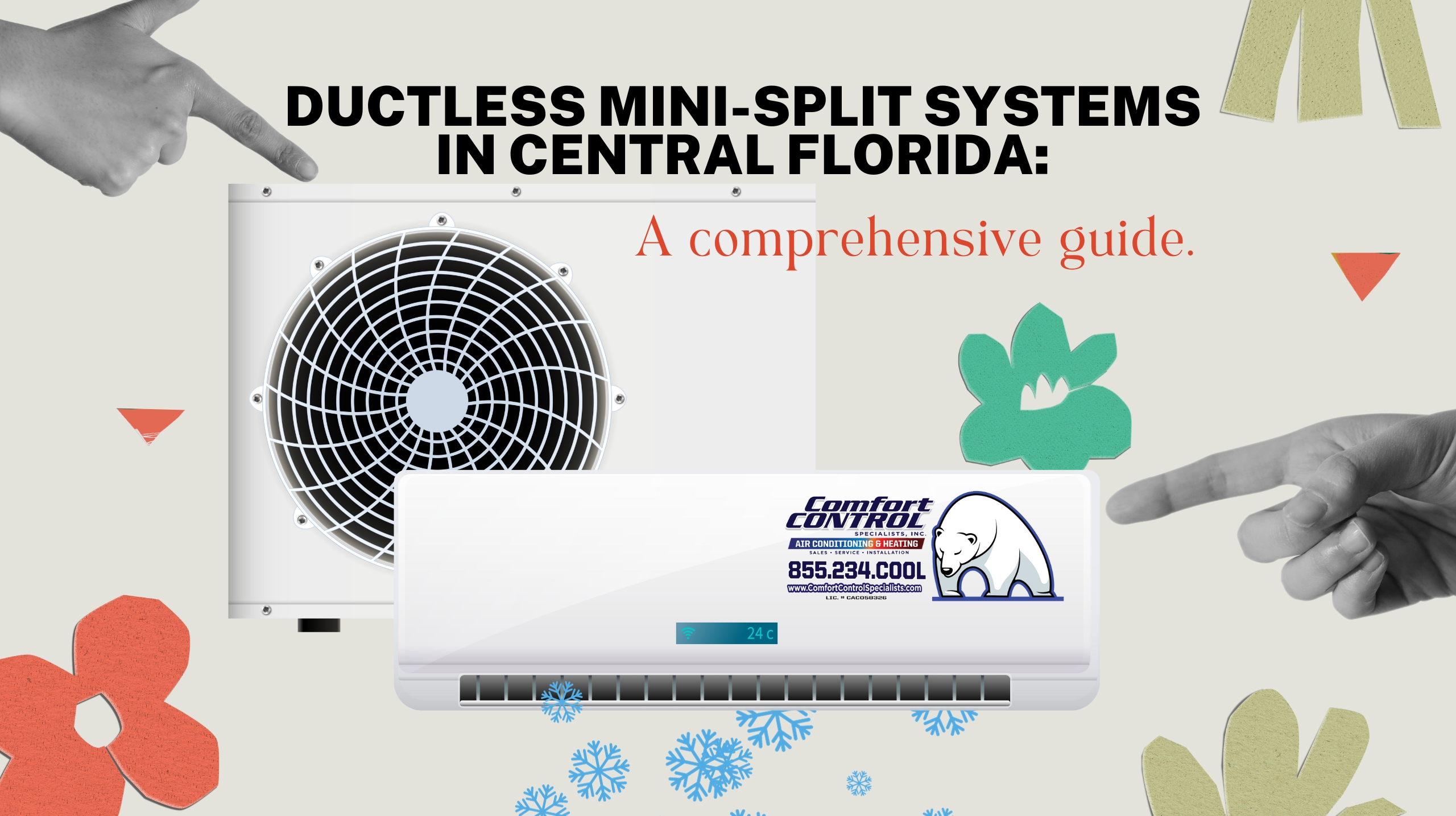[vc_row][vc_column][vc_column_text]
Ductless Mini-Split Systems in Central Florida: A Comprehensive Guide
With the relentless sun and fluctuating temperatures in Central Florida, maintaining indoor comfort is paramount. Many homeowners are familiar with traditional AC systems, but the ductless mini-split system is gaining popularity, especially for older homes without existing ductwork. If you’re considering a change or an upgrade, here’s everything you need to know about the advantages and disadvantages of ductless mini-split systems.
What is a Mini-Split System?
A ductless mini-split system, as its name suggests, is a heating and cooling system that doesn’t rely on a network of ducts to circulate air. Instead, it comprises an outdoor compressor/condenser and an indoor air-handling unit, connected by a conduit. These systems are also often referred to simply as “mini-splits” or “ductless systems.”
Advantages of a Mini-Split System
- Individual Room Control: One of the most compelling advantages of a ductless system is the ability to control temperatures individually in different rooms. Each indoor unit can be set to its own temperature, allowing for personalized comfort without affecting other areas.
- Energy Efficiency: Ductless systems lose fewer cooling and heating energies due to the absence of ducts. Traditional systems can lose up to 30% of energy, especially if ducts are in unconditioned spaces like attics. With a mini-split, what you consume is what you use.
- Easier and Faster Installation: Without the need for extensive ductwork, the installation of a mini-split system is often quicker and less invasive. This is especially beneficial for older homes in Central Florida where retrofitting ductwork can be a massive and messy task.
- Ideal for Homes without Ducts: Many vintage homes in Central Florida were constructed before the advent of centralized AC. For these homes, introducing a ducted system can be expensive and can compromise the architectural integrity. A ductless system offers a modern solution without the complexities of a traditional retrofit.
- Improved Indoor Air Quality: Mini-splits often have built-in air filters that can reduce pollen, allergens, and other pollutants. Traditional ducted systems can circulate dust, requiring regular professional cleaning. With ductless systems, homeowners can easily clean or replace filters, ensuring cleaner air circulation.
Disadvantages of a Mini-Split System
- Initial Cost: Upfront costs for mini-splits can be higher than traditional window units or baseboard heating systems. However, it’s essential to weigh this against the long-term energy savings and potential increased home value.
- Aesthetics: Some homeowners find the indoor units of mini-splits less visually appealing than vents or radiators. They are more conspicuous than hidden ducts, potentially disrupting the home’s interior decor.
- Maintenance: While easy, the maintenance needs to be consistent. Filters need regular cleaning or replacement to keep the system running efficiently and maintain good air quality.
- Requires Professional Installation: Despite being easier to install than ducted systems, mini-splits still require professional installation to ensure efficiency, proper performance, and warranty validation.
Ductless Mini-Split vs. Traditional AC System
- Efficiency: While both systems have made strides in energy efficiency, the lack of ducts in mini-split systems gives them a distinct advantage. Duct losses in traditional systems can be substantial, especially if not well maintained or insulated.
- Installation: Traditional systems require extensive ductwork, making installation longer and potentially more disruptive, especially in older homes. Mini-splits, with their simpler design, can often be installed in a day or two.
- Flexibility: Traditional AC offers a consistent temperature throughout the home, while mini-splits provide zonal temperature control. This flexibility can be both an advantage (customized comfort) and a disadvantage (inconsistent temperatures if not managed).
- Cost: While mini-splits might have a higher upfront cost, they often result in lower monthly utility bills due to their efficiency. Traditional systems might be less expensive initially but can lead to higher operational costs, especially if the ductwork isn’t optimized.
- Longevity: Both systems, if well-maintained, offer similar lifespans. However, neglecting maintenance on a mini-split might lead to more immediate efficiency losses due to its reliance on clear filters and unobstructed indoor units.
Conclusion
The choice between a ductless mini-split system and a traditional AC system often comes down to the specific needs of your Central Florida home. For older homes without existing ductwork, or for those who prioritize energy efficiency and individualized room control, the mini-split is an attractive option. However, aesthetic considerations and initial costs might sway some homeowners towards traditional systems. Like all home investments, it’s crucial to weigh the pros and cons and consult with HVAC professionals to make the most informed decision.
If you live in The Villages, Odessa, Keystone, Spring Hill, Tarpon Springs, Land O Lakes, Oldsmar, Brooksville, or the surrounding areas, please don’t hesitate to contact the Comfort Control Specialists for a comprehensive AC inspection and tune-up or AC repair.[/vc_column_text][/vc_column][/vc_row]



